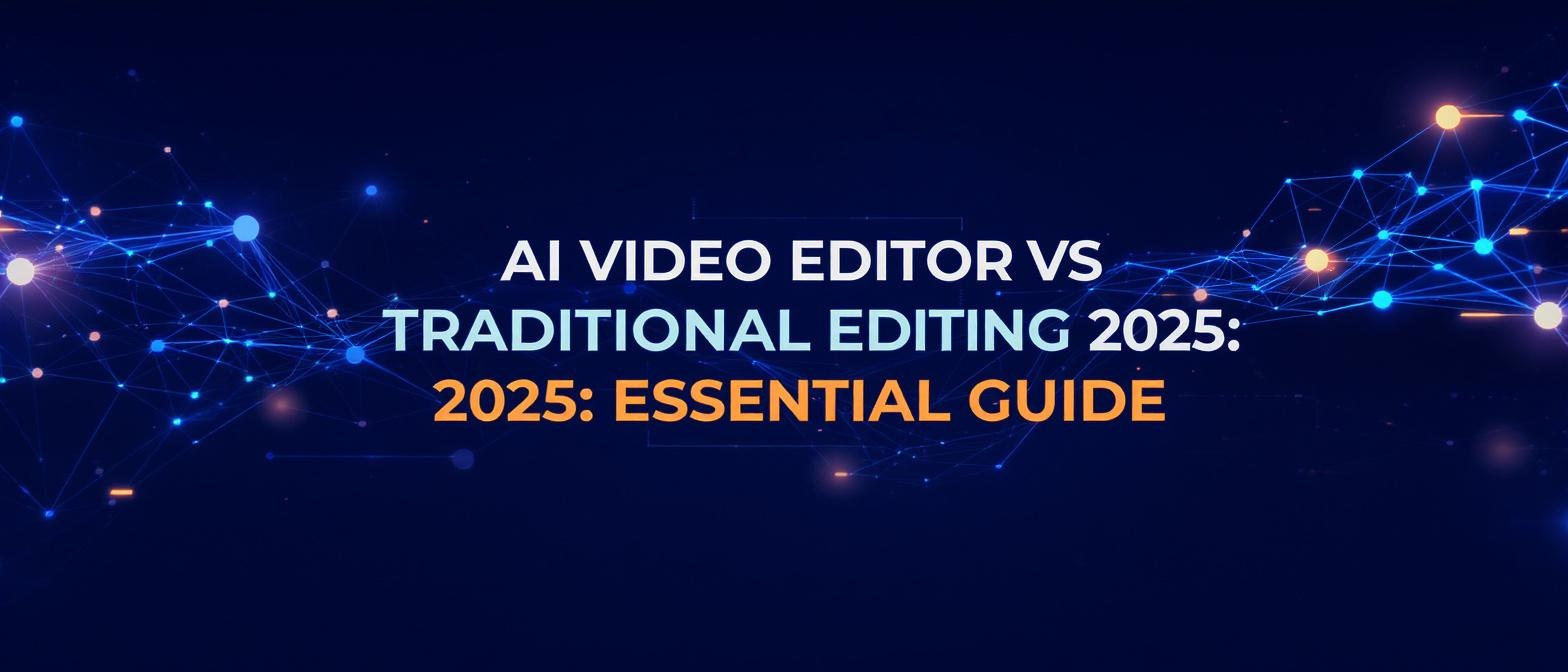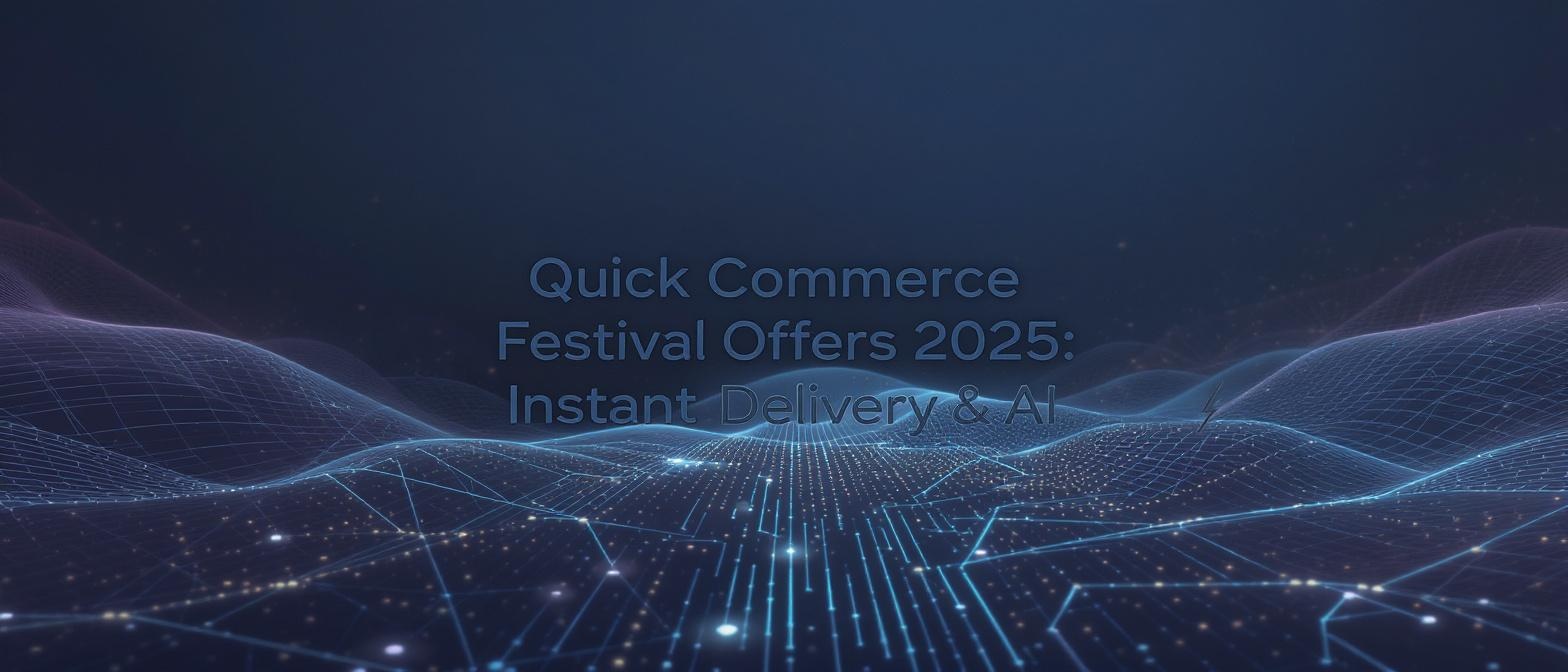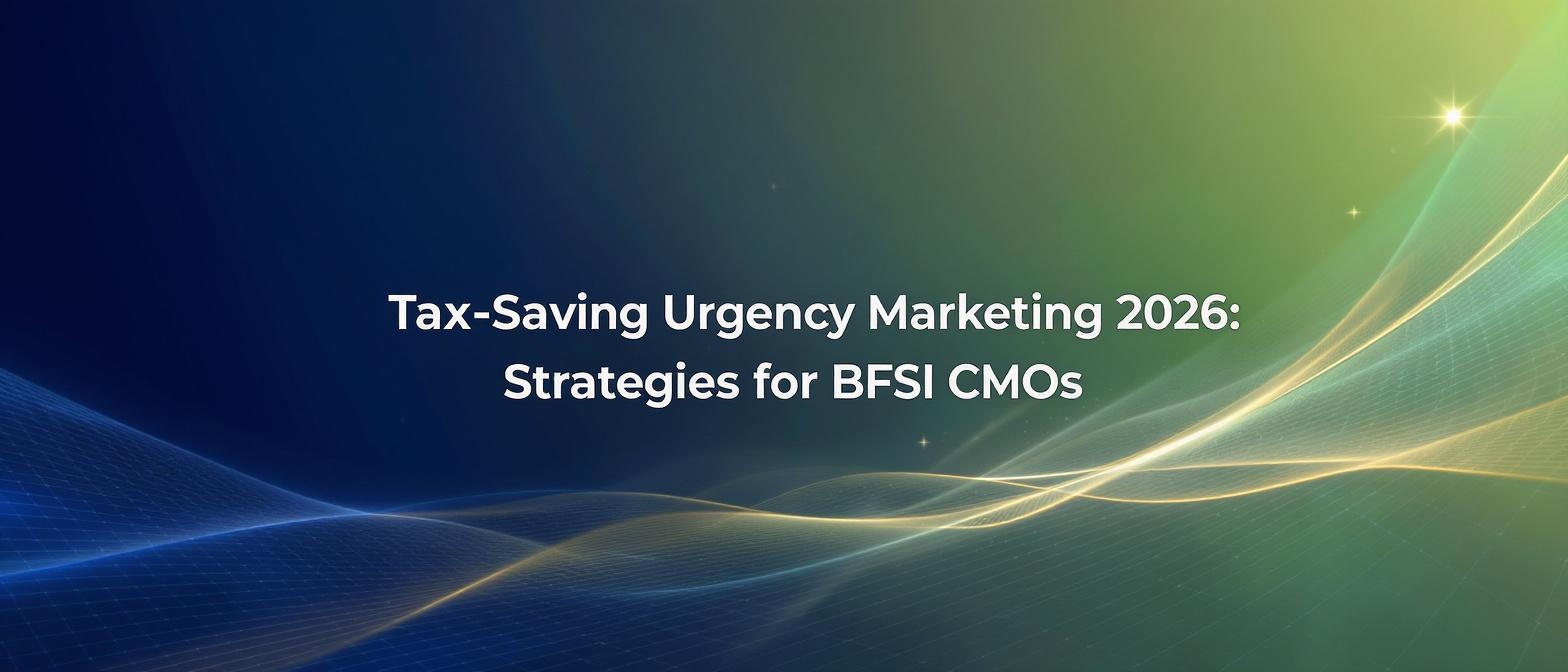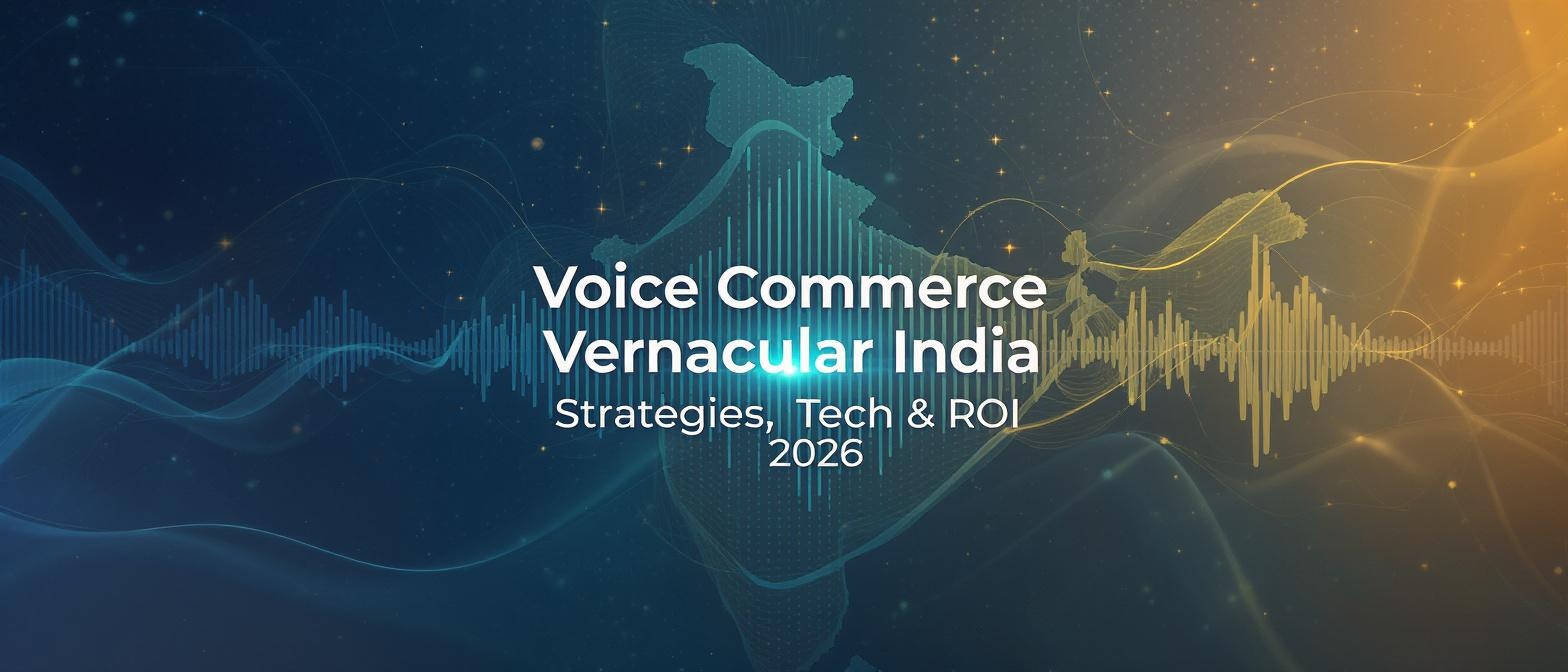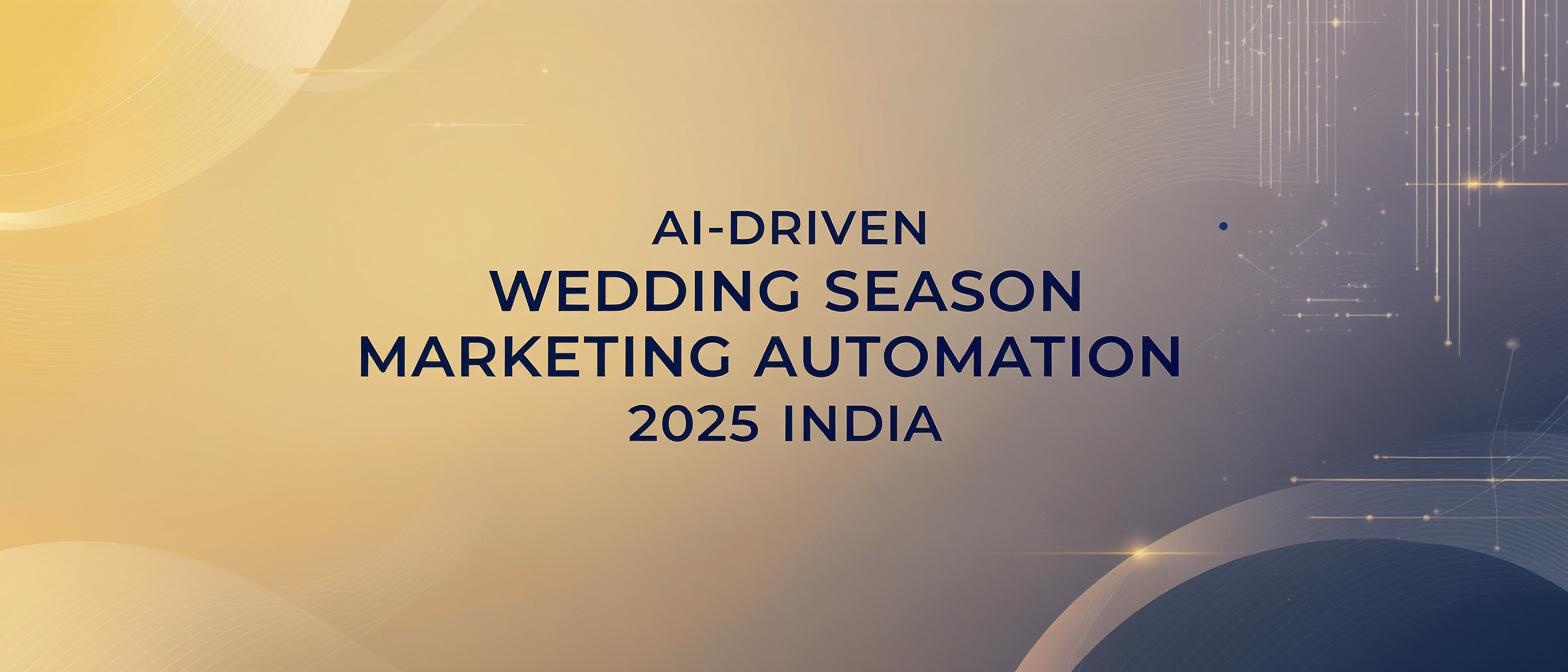AI Video Editor vs Traditional Editing 2025: Ultimate Guide for Content Creators
Key Takeaways
- The AI-driven revolution significantly reduces editing time and boosts scalability.
- Traditional editing offers unmatched creative control and cinematic polish.
- A hybrid workflow combines AI’s speed with hands-on refinement.
- Choosing between AI or traditional tools depends on project scope and brand specificity.
- Ethical, data-privacy, and consent issues are crucial in AI video generation.
In 2025, the debate of AI video editor vs traditional editing 2025 is not just a technical discussion; it’s a strategic crossroad reshaping how creators, marketers, and filmmakers bring stories to life. The rapid evolution of artificial intelligence has moved from a niche concept to a mainstream powerhouse, fundamentally altering workflows that were once measured in hours and days. But does this new wave of automation signal the end for traditional, hands-on editing?
This guide dives deep into that critical question. We’ll define an “AI video editor” as sophisticated software that leverages machine learning, computer vision, and natural language processing to automate routine and complex tasks—from smart cuts and color correction to audio enhancement and caption generation. On the other side, “traditional editing” refers to the meticulous, frame-by-frame craftsmanship performed in legendary Non-Linear Editors (NLEs) like Adobe Premiere Pro, Final Cut Pro, and DaVinci Resolve.
The purpose of this ultimate guide is to arm you—the modern video creator, editor, or marketing manager—with the data and insights needed to navigate this new landscape. We will critically evaluate speed, efficiency, cost, creative control, and output quality, helping you decide whether to adopt an AI-first platform, stick with a classic NLE, or, as is increasingly the case, master the art of a hybrid workflow. This comprehensive AI video editing tools comparison will be your definitive resource for making informed content creator video editing tools 2025 decisions.
1. The Video Editing Landscape in 2025: A Tectonic Shift
The video editing ecosystem of 2025 is a world away from where it was just a few years ago. The shift from manual-only processes to AI-assisted workflows has been swift and decisive. According to a recent Market.us report, projections indicate that by 2025, over half of all video content will be edited using AI technologies, signaling a major paradigm shift in industry practices. This isn't a future trend; it's the current reality.
The global AI video market is exploding, projected to reach $4.55 billion in 2025 and grow at a blistering compound annual growth rate (CAGR) of 32.2% through 2033, according to Grand View Research. This growth is fueled by the insatiable demand for fast, scalable video content across all digital platforms. Since 2023, AI video editing tools have transitioned from niche novelties to mainstream engines, now powering over 60% of short-form social media content.
Source: https://www.truefan.ai/blogs/ai-video-editor-traditional-guide
While this AI revolution gains momentum, the titans of traditional editing continue to be the industry's gold standard for high-fidelity projects.
- Adobe Premiere Pro: The ubiquitous choice for professionals, known for its deep integration with the Adobe Creative Cloud suite.
- Final Cut Pro: Apple’s streamlined yet powerful NLE, optimized for the macOS ecosystem and favored for its performance.
- DaVinci Resolve: Originally the go-to for Hollywood color grading, it has evolved into a full-fledged editing powerhouse, revered for its unparalleled color science and robust free version.
Source: https://vmake.ai/blog/ai-video-enhancement-vs-traditional-video-editing-comparative-guide-for-2025
However, the market is no longer a simple two-horse race. A new category of accessible, powerful, and often browser-based AI platforms has emerged as compelling traditional video editing alternatives. In markets like India, this innovation is hyper-localized. For example, Studio by TrueFan AI is tailored specifically to local creators and businesses, offering INR-based pricing tiers and features designed for regional needs. Simultaneously, established players are integrating AI modules, such as CyberLink PowerDirector's suite of AI-powered tools for sky replacement and motion tracking, blurring the lines between the two worlds.
2. The Core Role of AI in Modern Video Editing
So, what does “AI” actually do in video editing? It’s not about a robot making creative decisions for you. It’s about intelligent automation that handles the repetitive, time-consuming tasks, freeing up human creators to focus on storytelling and strategy.
Here are the core capabilities AI brings to the table:
- Automated Scene Detection and Smart Cuts: AI algorithms can analyze footage, identify distinct scenes, detect dialogue pauses, and even remove filler words (“ums” and “ahs”) automatically.
- AI-Driven Color Grading and Style Transfers: Instead of manually adjusting color wheels and curves, AI can analyze a clip and apply a consistent, professional color grade with a single click.
- Speech-to-Text Transcription and Auto-Captioning: The software listens to the audio track and generates a word-for-word transcript. This text can then be used to create perfectly synchronized captions.
- Synthetic Voiceovers and Lip-Synced Avatars: The frontier of AI video is generative. Platforms like Studio by TrueFan AI enable creators to generate video from just a script. By using pre-licensed digital avatars of real people and advanced text-to-speech, you can produce professional-quality videos without a camera, microphone, or actor. Studio by TrueFan AI’s 175+ language support is particularly powerful for creating localized content at scale.
The benefits of these capabilities are transformative, leading to enhanced speed, consistency across projects, and the ability to batch process dozens of videos simultaneously. For enterprises, this unlocks hyper-personalized marketing campaigns at scale. Companies like Zomato and Hero MotoCorp have leveraged these tools to create thousands of unique video variants for different audience segments, automating localization and dramatically increasing engagement. This is the new frontier of video editing automation tools.
Source: https://subscribr.ai/p/ai-video-editors-vs-traditional
3. Feature-by-Feature Comparison: AI Editors vs. Traditional Tools
When choosing between an AI video editor vs traditional editing 2025 workflow, a direct feature comparison is essential. Let’s break down the key differences in a clear, prose-based matrix.
Speed and Efficiency
- AI Editors: Unmatched for speed. An AI platform can analyze raw footage, produce a transcribed rough cut, add captions, and apply a color grade in 5 to 10 minutes.
- Traditional Editors: Inherently manual and time-intensive. The same process can easily take 1 to 3 hours for a short social media video.
Source: https://vmake.ai/blog/ai-video-enhancement-vs-traditional-video-editing-comparative-guide-for-2025
Creative Control
- AI Editors: Limited manual finesse. While AI offers smart suggestions, frame-by-frame keyframing and advanced multi-layer compositing are generally not available.
- Traditional Editors: The pinnacle of creative freedom. Every pixel and frame is under direct control, allowing for advanced effects and intricate audio mixing.
Ease of Use
- AI Editors: Very low learning curve, often with web-based interfaces ideal for marketers and social media managers.
- Traditional Editors: Powerful yet complex. Tools like Premiere Pro or DaVinci Resolve require significant training and practice.
Cost
- AI Editors: Subscription-based, predictable, and often more cost-effective for high-volume content production. For instance, Studio by TrueFan AI offers tiers from ₹2,999 to ₹19,999 per month.
- Traditional Editors: Higher upfront and ongoing costs including software licenses (Adobe Creative Cloud, etc.) and powerful hardware.
Output Quality
- AI Editors: Optimized for digital platforms with HD or 4K output. May lack the fine polish of a human expert.
- Traditional Editors: The gold standard for cinematic and broadcast-quality productions where subtle control is essential.
4. The Hybrid Workflow in Action: Getting the Best of Both Worlds
The debate over AI video editor vs traditional editing 2025 is evolving beyond a simple binary choice. The most forward-thinking creators and agencies are adopting a powerful hybrid workflow that leverages the strengths of both. This approach maximizes efficiency without sacrificing creative integrity.
Step 1: Ingest and First Cut with AI (The 80% Draft): Start by uploading all your raw footage to an AI platform. Use its automated tools to generate transcripts, auto-assemble highlighted sections, and apply color correction. Within 30 minutes, you have a rough cut that saves hours of manual labor.
Step 2: Export and Refine in a Traditional NLE (The Final 20% Polish): Import the AI rough cut into Premiere Pro or DaVinci Resolve. Fine-tune timing, add complex effects, and perform a tailored color grade. This final human touch delivers a professional, high-end polish in a fraction of the usual time.
This hybrid model represents the future of video production, reframing AI as an essential assistant rather than a replacement.
5. Pros and Cons: A Balanced View
To make an informed decision, you need to weigh the advantages and disadvantages of each approach.
Pros of AI Video Editing
- Unmatched Speed & Scalability: Process multiple videos concurrently and shorten production timelines.
- Cost-Effectiveness: Lower manual labor costs and predictable subscription models.
- Hyper-Personalization: Generate thousands of video variants for individualized marketing messages.
- Accessibility: Empowers non-editors to create quality content, democratizing video production.
Cons of AI Video Editing
- Reduced Granular Control: AI struggles with unique stylistic nuances and bespoke pacing.
- Potential for Artifacts: Automated decisions can lead to awkward cuts or transitions.
- Dependency on Data Quality: Poor source footage can confuse AI algorithms.
Pros of Traditional Editing
- Maximum Creative Freedom: Fine-tune every frame for a distinct artistic vision.
- Robust Ecosystems: Leverage decades of community support and extensive plugin libraries.
- Proven Reliability: The choice for high-stakes projects like feature films and broadcast TV.
Cons of Traditional Editing
- Extremely Time-Intensive: Learning curves and manual processes slow production.
- Higher Overall Costs: Includes software, hardware, and skilled labor expenses.
- Scalability Challenges: Increasing output demands proportionally more editors.
6. Applications & Use Cases Dominating 2025
The practical applications of AI editing are expanding daily. Here’s where these tools are making the biggest impact in 2025:
- Social Media Campaigns: Reformat a single video for multiple platforms, complete with captions and translations.
- Advertising and A/B Testing: Quickly produce ad variants with different hooks, calls-to-action, or background music.
- Personalized Marketing at Scale: Deliver customized videos to thousands of viewers using avatar-based generation for a personal touch.
- E-learning and Corporate Communications: Self-service studio platforms allow in-house teams to create training modules without specialized staff.
- The Creator Economy: YouTubers and influencers integrate AI co-hosts and digital twins to increase production volume and audience engagement.
7. Time Savings & Efficiency Metrics: The ROI of AI
The most compelling argument for AI video editing lies in its measurable ROI through time and cost savings:
- Industry-wide data shows a 60-70% reduction in editing time with AI-assisted workflows.
- A 2-minute social clip that takes up to 4 hours in Premiere Pro can be 80% finished in about 20 minutes with AI.
- CyberLink PowerDirector demonstrates a 50% reduction in workflow steps with features like AI sky replacement.
- For large enterprises, solutions like Studio by TrueFan AI shorten revision cycles from days to hours, freeing creative teams for higher-level tasks.
Source: https://www.cyberlink.com/blog/the-top-video-editors/2452/best-ai-video-editors
8. Top AI Video Editors in 2025 (India-Focused)
The market for AI video editing tools comparison is vast. Below are some leading platforms in 2025, with special relevance to the Indian market.
-
Studio by TrueFan AI
Core AI Features: Browser-based script-to-video generation, photorealistic avatars, voice cloning, 175+ languages.
Ideal Use Case: Marketers, e-learning, corporate comms, creators needing high-volume video content.
Pricing: Plans from ₹2,999/month (720p, 10 mins) to ₹19,999/month (1080p, 120 mins).
Link: https://studio.truefan.ai/ -
CyberLink PowerDirector
Core AI Features: AI Sky Replacement, AI Color Correction, AI Motion Tracking within a traditional NLE.
Ideal Use Case: Prosumers wanting speed boosts within a familiar editing environment.
Pricing: Subscription around ₹4,000/year.
Link: https://www.cyberlink.com/ -
Synthesia
Core AI Features: Text-to-video with high-quality avatars, multi-language support, enterprise-level features.
Ideal Use Case: Large corporations needing polished, avatar-led training videos.
Pricing: Custom enterprise plans.
Link: https://www.synthesia.io/ -
Promeo
Core AI Features: Template-based editor for quick social content creation.
Ideal Use Case: Social media managers and small businesses creating trendy videos for Reels/TikTok.
Pricing: Freemium with premium subscriptions.
Link: https://www.cyberlink.com/products/promeo-video-editor-app/features_en_US.html -
Vmake.ai
Core AI Features: Focused on enhancement (color correction, stabilization, upscaling) rather than full editing.
Ideal Use Case: Editors seeking AI-powered footage improvements.
Pricing: Pay-per-use model.
Link: https://vmake.ai/
9. Ethical Considerations & The Rise of Digital Twins
As AI-generated content becomes more sophisticated, ethics enter the conversation. The rise of “deepfakes” highlights the need for responsible AI development. Leading platforms operate on a consent-first model, ensuring individuals have agreed to the creation and use of their digital likeness. Studio by TrueFan AI, for example, uses licensed digital twins of real actors and influencers who are compensated for their likeness. Content moderation features also help prevent misuse.
Source: https://www.weforum.org/agenda/2023/06/generative-ai-responsible-guidelines/
Frequently Asked Questions
1. How do AI video editors handle complex audio editing and sound design?
Currently, this is a limitation for most AI editors. They excel at dialogue enhancement and noise reduction, but intricate sound design and cinematic scoring still require a traditional DAW or NLE.
2. Can AI-generated video content be monetized on platforms like YouTube?
Yes. As long as the content is original and follows platform guidelines, it can be monetized. Ensure you use a platform that provides commercial licenses for any AI avatars or voices.
3. What are the limitations of AI in understanding brand-specific nuances and tone?
AI models excel at producing generally appealing outputs but can struggle with highly specific brand voices or unconventional styles. A human editor is still essential for final creative alignment.
4. Are there data privacy concerns when uploading raw footage to a cloud-based AI editor?
Yes, this is a valid concern. Opt for providers with strong privacy policies and security certifications (SOC 2, ISO 27001). Platforms like Studio by TrueFan AI are built with enterprise-grade security measures to protect your data.
5. How is AI changing the role of the traditional video editor in 2025?
AI is shifting the editor’s role toward higher-level creativity and decision-making. Routine tasks like cutting and transcribing are automated, freeing editors to focus on storytelling and final polish.
Conclusion & Final Recommendations
The AI video editor vs traditional editing 2025 debate isn’t about finding a single winner—it’s about leveraging the right tools for the right job. AI excels at speed, scalability, and cost-effectiveness, making it a powerful option for social media content, ads, and e-learning. Traditional NLEs remain the gold standard for cinematic polish and nuanced storytelling.
For many creators, a hybrid approach offers the best of both worlds. Use AI for the initial 70% of editing—auto-cutting, transcribing, color correcting—and then rely on a traditional editor for the final 30% of perfection and brand-specific flair. By embracing AI intelligently, you can reach wider audiences, produce more content, and reclaim your time for the creative work that truly sets you apart.

